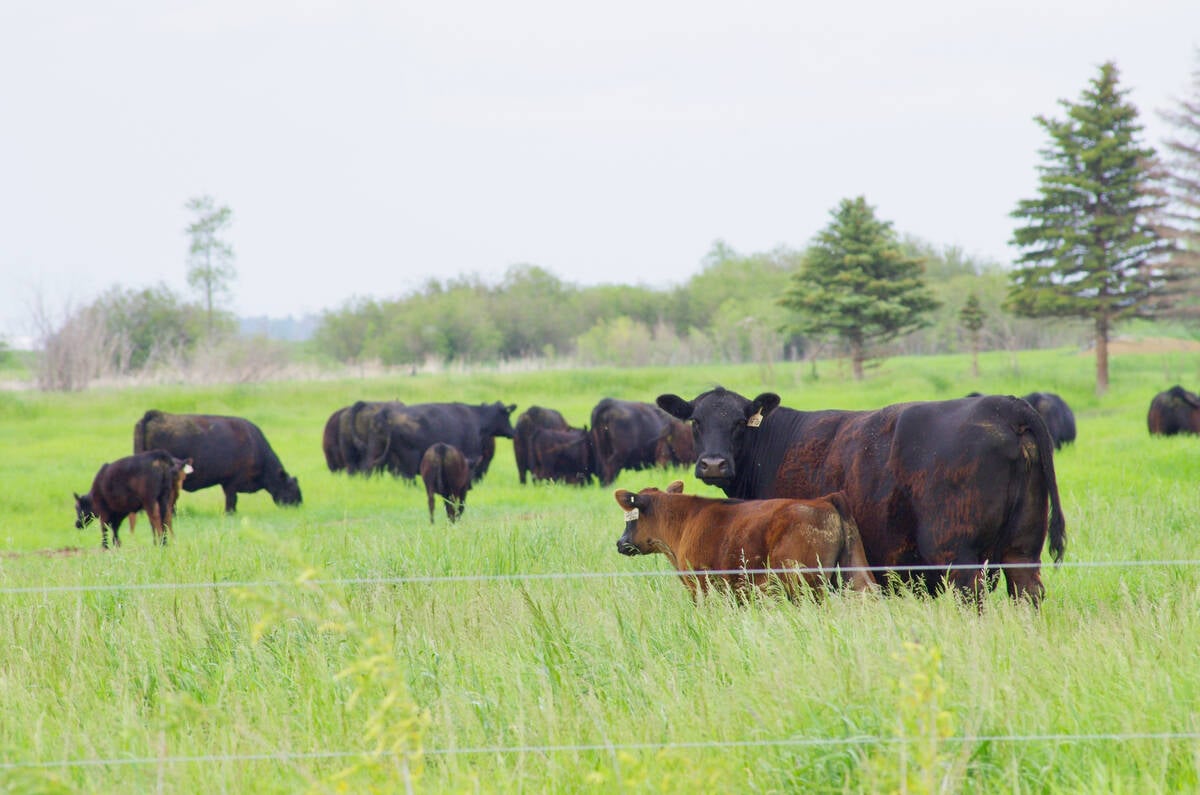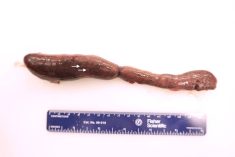As with my previous column on flies, it is hard to come up with anything positive to write about mosquitoes. In an optimistic take on these tiny insects, Ned Flanders from the TV show The Simpsons commented, “sure are fun to scratch — satisfying.”
There are approximately 3,600 known species of mosquitoes ,and scientists classify them among small flies. Like their larger fly relatives, mosquitoes occupy diverse environments but require moist environments, usually still water, for reproduction.
While male mosquitoes are rather innocuous, getting their nourishment from vegetarian sources, females require a blood meal to produce and deposit eggs. Their weapon is called a proboscis, a sharp nose-piece that pierces the skin, severs small blood vessels and acts as a straw for sucking up the resultant blood.
Read Also

Tick research from the University of Manitoba focuses on insects and testing
Manitoba researchers are looking into the effects of tick and fly disease in cattle.
They are masters at spreading viruses, leading to a significant disease burden throughout human history and also affecting animals.
However, they can also spread parasites, such as the ones that cause malaria in people and heartworm infections in dogs and cats.
Mosquitoes are not effective at spreading bacteria.
Pathogen transmission occurs when mosquitoes bite an infected host, followed by one that is susceptible but not yet infected. During the bite, they inject saliva and anti-blood clotting molecules. Pathogens are in the saliva and get into the new host during the bite.
Environmental temperatures dictate the lifespan of individual mosquitoes and also how quickly they can pass along an ingested pathogen. Both of these factors directly impact rates of disease transmission.
Canada has long been at the northern limit of many infectious diseases, including those carried by mosquitoes, because it is simply too cold here for the diseases to establish and spread.
Throughout history, humans have been pestered and infected by mosquitoes and the diseases they carry such as malaria and Dengue and yellow fevers. However, mosquitoes are also significant to the health of animals.
Just as with larger flies, mosquitoes harass animals and cause blood loss, both factors that can impact production.
The most significant diseases spread by mosquitoes among livestock include those that affect horses and sheep.
West Nile Virus and eastern and western equine encephalitis viruses are deadly horse diseases spread by mosquitoes. This is why routine vaccination is recommended for these pathogens. Eastern and western equine encephalitis viruses are present in traditional three- and four-way vaccines, and many veterinarians recommend routine West Nile Virus vaccination as well.
Sheep and goats can become infected with the mosquito-borne Cache Valley Fever virus, which causes abortions, stillbirths and congenital abnormalities when females become infected during pregnancy.
It can be a challenge to diagnose these infections because they occur well before the signs of pregnancy loss and abnormalities show up. Cases have been identified in Eastern Canada and evidence of past infection in sheep on the Prairies. This is a disease likely to increase here with climate change.
Dogs and cats acquire heartworm infections from mosquito bites. This worm also affects wild canines such as foxes, coyotes and wolves. Its official name is Dirofilaria immitis.
Adult worms live in the pulmonary arteries, which is one of the main blood vessels leaving the heart. Untreated, the worms block blood flow, leading to heart failure.
The disease is currently only a significant issue in southern regions of Manitoba, Ontario and Quebec. However, if you travel anywhere in the United States with your dog or cat, it is a good idea to speak to your veterinarian about heartworm prevention.
Preventing mosquito bites is a challenge. Limiting standing water can reduce available habitats for mosquitoes to lay their eggs. It may be wise to limit outdoor time during dawn and dusk, when mosquitoes are most active. When available, vaccines against the pathogens carried by mosquitoes can limit the impact.
Climate change will influence many infectious diseases in Canada, including those carried by mosquitoes. Because temperature is a key factor in determining how well a mosquito-borne disease is spread, warmer temperatures could mean more frequent disease.
However, the relationship is complex because very hot temperatures also decrease disease transmission. For instance, the estimated optimal temperature range for West Nile Virus is 11 to 34 C. Mosquitoes aren’t able to effectively transmit the virus at temperatures higher than this.
Generally with climate change in Canada, we can expect longer mosquito seasons that translate to increases in mosquito-borne infections.
Dr. Jamie Rothenburger, DVM, MVetSc,PhD, DACVP, is a veterinarian who practices pathology and is an assistant professor at the University of Calgary’s Faculty of Veterinary Medicine. X: @JRothenburger

















